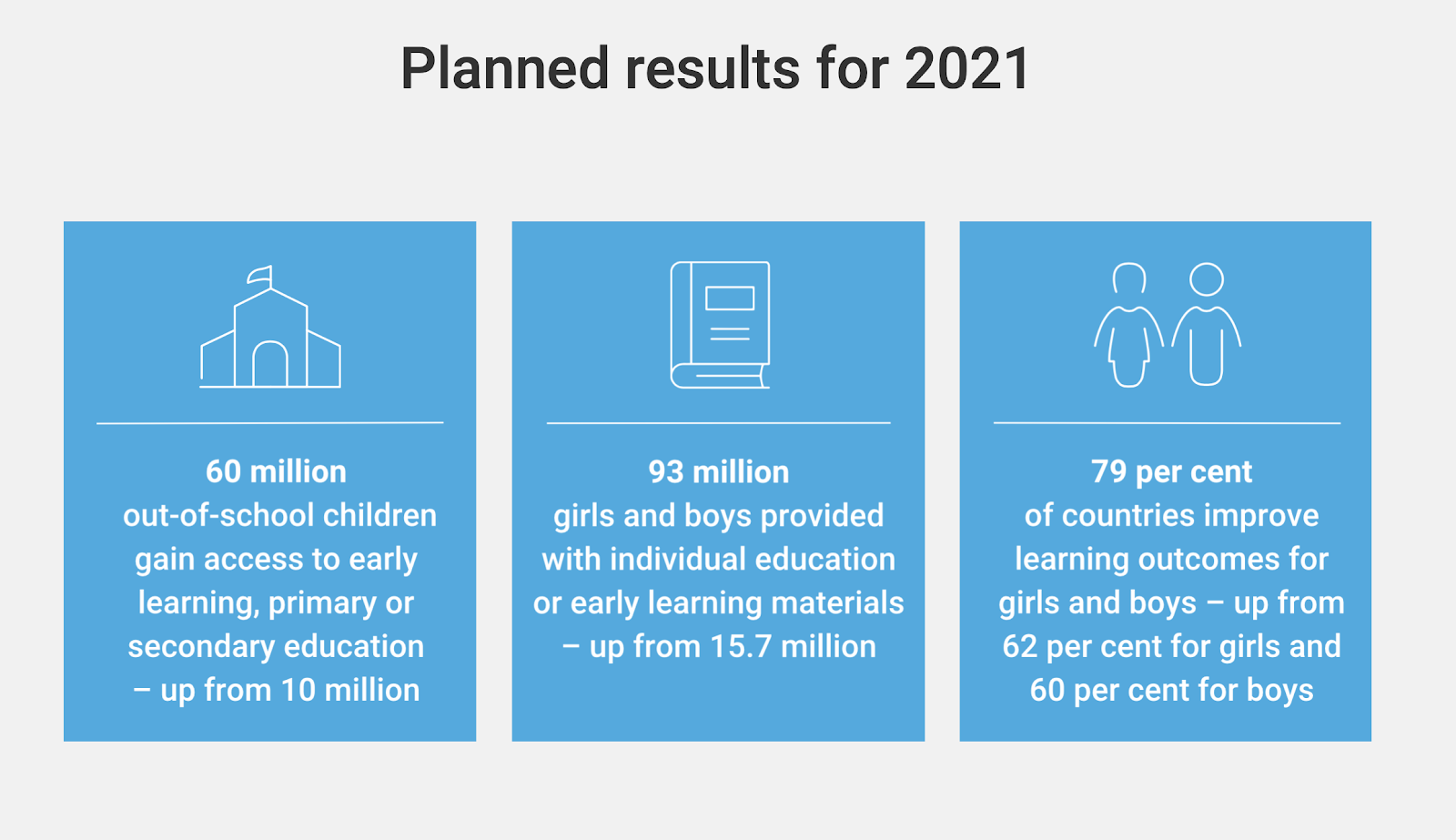UNICEF: Education and Gender Equality
UNICEF, the United Nations International Children’s Emergency Fund, was founded in 1946 to help children affected by World War II. UNICEF’s work ranges from protecting children’s rights to helping children during emergencies, and the organization aims to help all children without discrimination regarding gender, race, or disability. The OHS UNICEF Club is focused on learning more about children’s issues and spreading awareness to the whole OHS community and beyond. The leaders, Alexandria Thomas and Rachel Hu, want to help people find ways in which they can take action to improve children’s lives all over the world. They believe that people need to be informed about the situation children are living in in order to take action. Thus, the club focuses on informing people about these important issues and helps people make the world a better place for children.
As of 2020, widespread, efficient, and equal education still does not exist in most places around the world. Even though 1 billion children head to school each day, unfortunately, schooling does not necessarily lead to learning. Most children go to school without retaining any information, often because the environment in which they learn is not suitable and there is a lack of trained teachers. UNICEF believes that “all children have the right to go to school and learn, regardless of who they are, where they live or how much money their family has.” They strive to build schools and employ trained teachers in places where that is unavailable, and break this issue down to three main goals: access, learning and skills, as well as other variables such as emergencies and fragile contexts. In order to make sure that schooling leads to learning, UNICEF makes sure that they create strong education systems with innovative solutions to problems. In places like Afghanistan and Iraq, children are often unable to attend school because of the situation they are in. In these places, there are constantly wars going on, there is constantly a lack of food, clean water, etc. These factors make it very hard for parents to send their children to school without adding an additional burden. Thus, UNICEF hopes that they will be able to create “improved learning and protection for children in emergencies and on the move.” Overall, UNICEF believes that solving the learning crisis will need a newer radical approach with focuses on enhancing learning. Below is a screenshot from UNCIEF’s website which details their planned results for 2021.
UNICEF’s planned results for 2021 listed on their website
Because UNICEF is the world’s leading advocate for children’s rights and works within 190 countries and territories, they work with multiple other organizations to help achieve their goals. UNICEF is partnered up with the Global Partnership for Education, the Global Education Cluster and the United Nation Girls’ education Initiative to advance their strategic plan which aims to create a world in which every child learns. In 2012, UNICEF created the Out-of-School Children Initiative which aimed to create a substantial reduction in the amount of children that did not attend school. They provided governments with actionable data which would show them the reality of the situation. As of today, over 90 countries have joined the program and many rely on it to provide them education sector plans.
UNICEF also invests in providing gender equality learning throughout the world. Research has shown that girls who receive an education are more likely to lead healthy, productive lives, which in turn builds a better future for themselves and their families. Furthermore, girls’ education strengthens the economy and reduces inequality, which contributes to a more stable and resilient society that gives everyone the opportunity to fulfill their potential. However, education for girls is not just about girls having access to school; it’s about girls feeling safe in classrooms and feeling supported in the subjects and careers they choose to pursue, especially in those in which women are underrepresented. Even though there is evidence that education for girls is being developed, there are still “132 million girls are out of school, including 34.3 million of primary school age, 30 million of lower-secondary school age, and 67.4 million of upper-secondary school age. In countries affected by conflict, girls are more than twice as likely to be out of school than girls living in non-affected countries.” To achieve this goal, UNICEF is working on removing gender stereotypes from learning materials, addressing obstacles such as re-entry policies for young mothers, and focusing teacher training and professional development on gender-responsive pedagogies.
One common misconception that stunts the growth of gender-equality education is that it only benefits girls. In reality, gender-equality education empowers both girls and boys that help the development of life skills, such as self-management, communication, negotiation and critical thinking, and this is precisely why UNICEF has made equal education a part of its mission. These skills help close pay gaps and build prosperity for countries as a whole. In many countries, perception of masculinity can “fuel disengagement from school, child labour, gang violence and recruitment into armed groups.” Because boys are often pressured to earn an income, they often drop out of secondary school because many of them believe that the school curriculum has nothing to do with work opportunities.
UNICEF also works with communities and governments to remove the barriers to girls’ education in hopes of eliminating discriminatory gender norms and harmful practices that do not allow girls access to schooling and quality learning. UNICEF also supports governments to make sure that budgets are gender-responsive and that national education plans and policies address and prioritize gender equality. They use assessment data to help schools and governments get rid of gender gaps in learning. By doing this, UNICEF moves closer to their goal of removing gender stereotypes from learning materials and focusing teacher training and professional development on gender-responsive methods.
OHS’s UNICEF Club contributes to UNICEF’s overall missions statement by meeting almost every week and discussing a specific topic each month. In that month, the first meeting is usually an introductory meeting on the topic and the other meetings go into more detail and club members collaborate either together or with another club to create a project that reflects the topic of the month. In each meeting, there is almost always a discussion session which allows club members to share their thoughts which invokes them to help the issue at hand. For example, the OHS UNICEF Club has collaborated with the Model UN club to discuss funding for children relief projects that are led by UNICEF, it has written and illustrated a children’s book for kids in need in the Philippines by working closely with the Literature Club and the Art Club here at OHS, it has mailed physical postcards to children who have been displaced from their homes, and much more!

